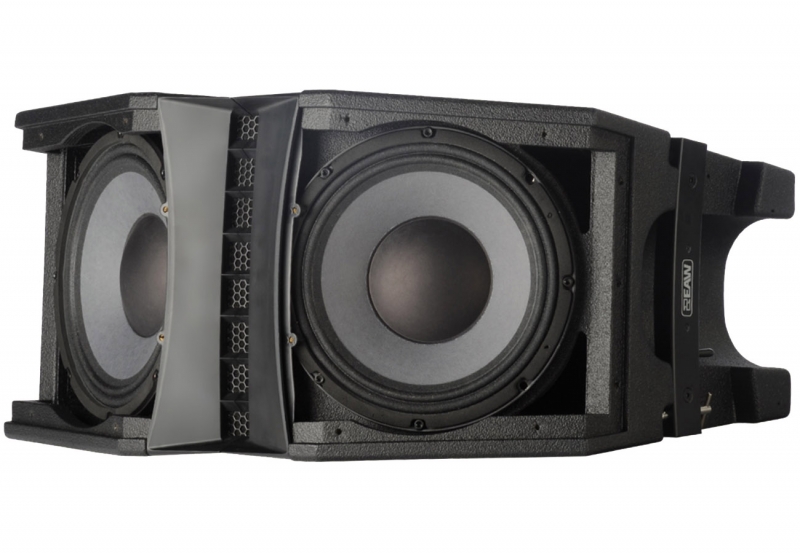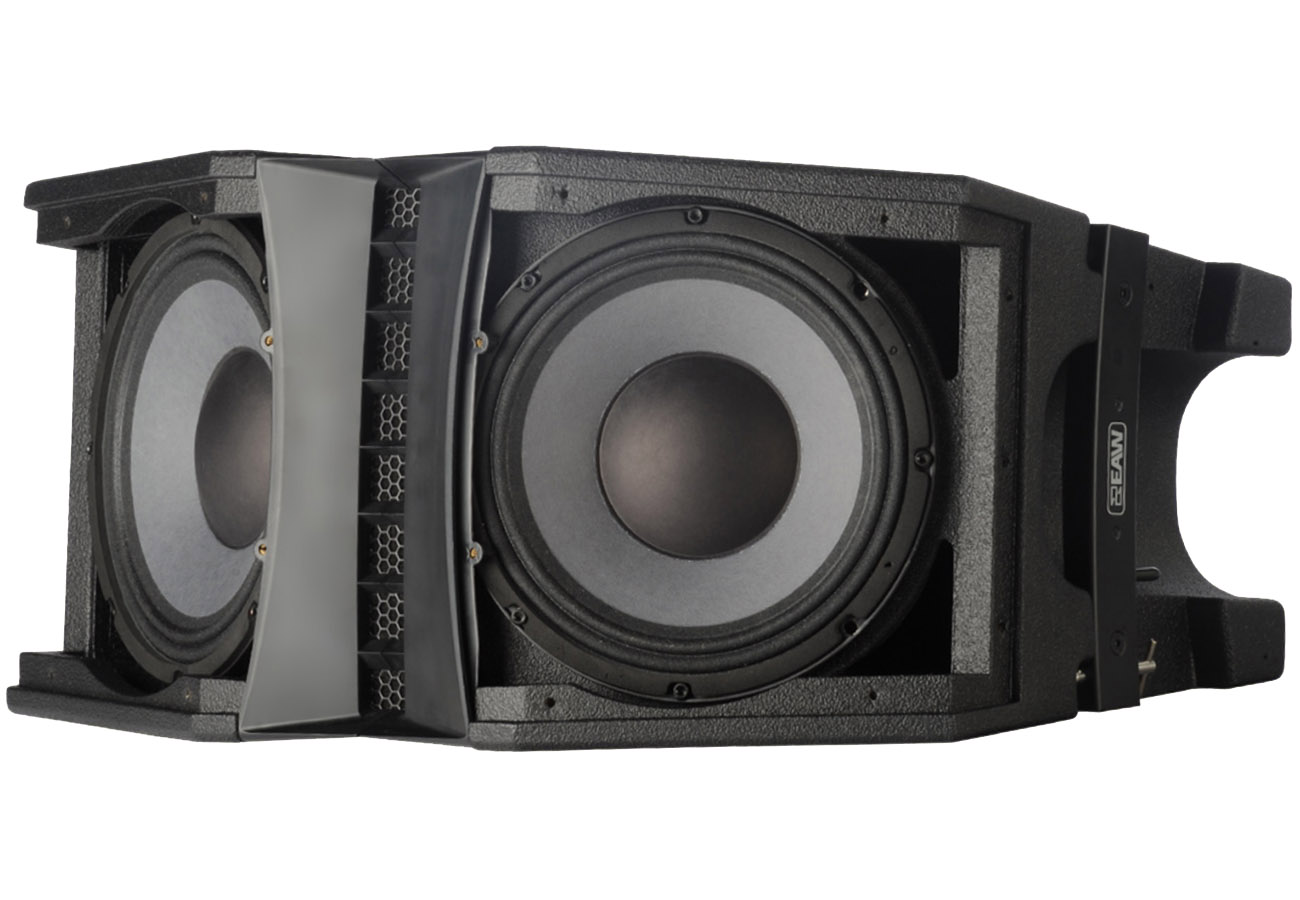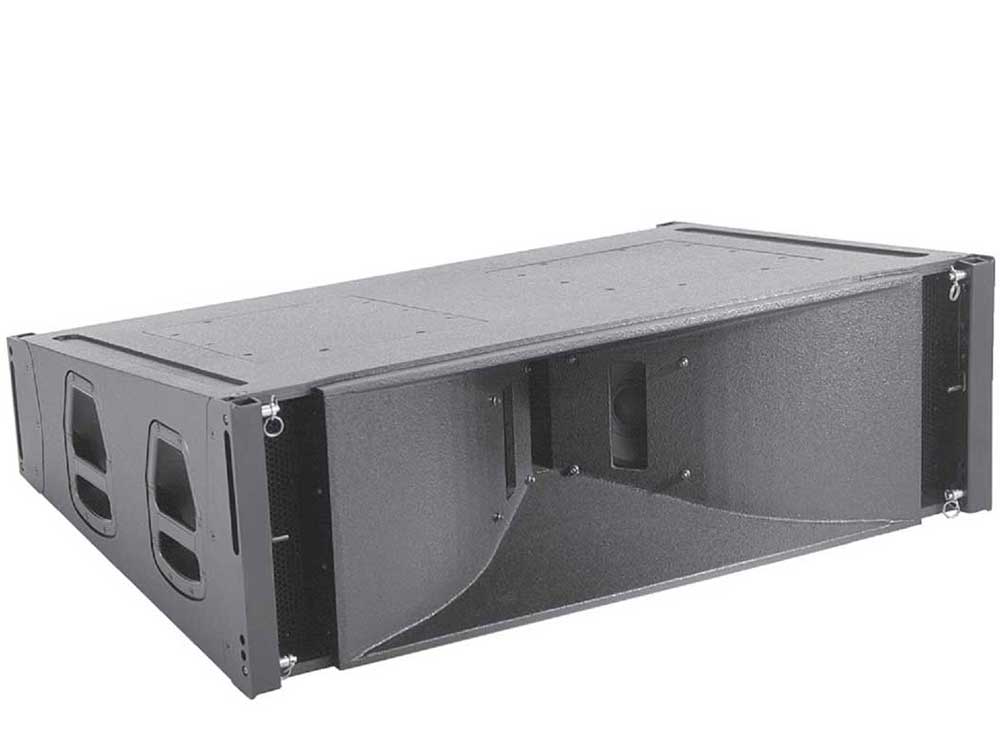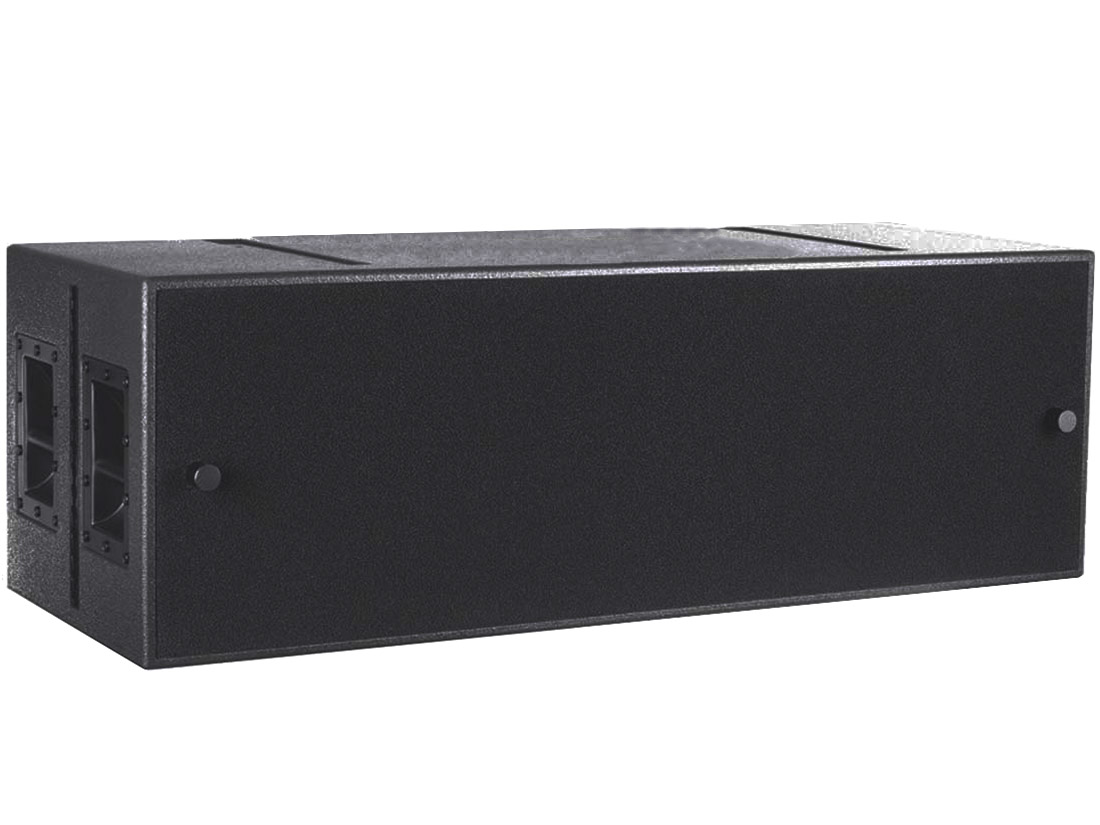Best line array pa system
12 September 2023

|
Are you ready to take your sound system to the next level? Look no further than the revolutionary Line Array PA System. With its cutting-edge technology and superior audio performance, this system is a game-changer for any event or venue. The Line Array PA System delivers crystal-clear sound that reaches every corner of the space, ensuring that every audience member hears every note and word with perfect clarity. Designed with precision and attention to detail, this state-of-the-art system is sure to impress even the most discerning audiophile. Its sleek and compact design makes it easy to set up and transport, while its advanced features allow for seamless integration with other audio equipment. Whether you're hosting a concert, conference, or any other live event, the Line Array PA System is sure to deliver an unforgettable audio experience. Experience the power of sound like never before. Discover the best Line Array PA System for your needs and unleash the full potential of your audio setup. Advantages of line array PA systems Line array PA systems have gained immense popularity in recent years, and for good reason. These systems offer a wide range of advantages over traditional sound reinforcement setups. One of the key advantages is their ability to provide consistent and even sound coverage throughout the venue. Traditional systems often suffer from uneven sound distribution, with some areas receiving too much volume while others are left with poor sound quality. Line array systems solve this problem by using multiple closely spaced speakers that work together to create a seamless audio experience. Another major advantage of line array systems is their long throw capability. These systems are designed to project sound over long distances without losing clarity or volume. This makes them ideal for outdoor events or large venues where sound needs to reach a large audience. Additionally, line array systems offer improved feedback rejection, reducing the chances of unwanted squealing or screeching noises during live performances. In terms of aesthetics, line array systems are a clear winner. Their sleek and compact design allows for easy integration into any venue without obstructing the view or distracting the audience. The speakers can be hung from trusses or stacked on subwoofers, providing a clean and professional look. Moreover, line array systems are highly modular, allowing for easy scalability based on the size of the venue or event. Whether you need a small system for intimate gatherings or a large-scale setup for a stadium concert, line array systems can be tailored to meet your specific requirements. With their advanced technology and numerous advantages, line array PA systems have set a new standard for audio reinforcement. These systems offer unparalleled sound quality, even coverage, and versatility, making them a top choice for professionals in the industry. Key components of a line array PA system To fully understand the capabilities of a line array PA system, it is important to familiarize yourself with its key components. A typical line array system consists of the following components: Line Array Speakers: The heart of the system, line array speakers are specially designed to provide focused and controlled sound dispersion. These speakers typically consist of multiple drivers mounted vertically on a frame. Each driver is responsible for a specific frequency range, ensuring optimal sound reproduction across the entire spectrum. Line array speakers are available in various sizes and configurations to suit different venue sizes and requirements. Subwoofers: Subwoofers are essential for reproducing low-frequency sounds, such as bass and kick drums. They add depth and impact to the overall sound system, enhancing the listening experience. Subwoofers are typically placed on the ground or flown alongside the line array speakers to create a balanced and immersive audio environment. Amplifiers: Amplifiers are responsible for powering the speakers and ensuring that they deliver the required sound levels. Line array PA systems often require multiple amplifiers to drive the different speaker components effectively. These amplifiers should be chosen based on the power requirements of the speakers and the overall system configuration. Digital Signal Processors (DSP): DSPs play a crucial role in optimizing the sound quality and performance of a line array PA system. These devices allow for precise control over the audio signal, enabling adjustments such as equalization, time alignment, and crossover settings. DSPs also provide crucial system protection features, preventing damage to the speakers and amplifiers. Mixing Console: A mixing console is essential for controlling and balancing the audio signals from various sources, such as microphones, instruments, and playback devices. The console allows the sound engineer to adjust the volume, EQ, and effects for each channel, ensuring that the sound is mixed to perfection. Cables and Connectors: High-quality cables and connectors are essential for maintaining the integrity of the audio signal. It is important to use balanced cables, such as XLR or TRS, to minimize interference and ensure optimal sound quality. Proper cable management is also crucial to avoid any tripping hazards and maintain a clean and organized setup. By understanding the key components of a line array PA system, you can make informed decisions when selecting and configuring your audio setup. Each component plays a vital role in delivering the best possible sound quality and coverage for your specific needs. |
 |
|
Factors to consider when choosing a line array PA system Choosing the right line array PA system for your needs can be a daunting task, given the wide range of options available in the market. However, by considering a few key factors, you can make an informed decision and select a system that perfectly suits your requirements. Here are some important factors to consider when choosing a line array PA system: Venue Size and Configuration: The size and layout of your venue play a crucial role in determining the type and size of line array system you need. Larger venues with high ceilings may require larger line array speakers with more power and throw capability, while smaller venues may benefit from compact and scalable systems. Consider the acoustics of the venue as well, as this can affect the overall sound quality and coverage. Power Handling and SPL: Power handling refers to the amount of power the speakers can handle without distortion or damage. SPL, or sound pressure level, indicates the maximum volume level the speakers can produce. When choosing a line array system, ensure that the power handling and SPL ratings meet the requirements of your venue and event. It is important to strike a balance between power and clarity to avoid any audio issues. Frequency Response and Dispersion: The frequency response of the line array system determines the range of frequencies it can reproduce accurately. Look for systems that offer a wide frequency response to ensure that all elements of the audio spectrum are faithfully reproduced. Additionally, consider the dispersion characteristics of the system. A wider dispersion angle allows for better coverage, especially in venues with complex layouts or irregular seating arrangements. System Scalability and Flexibility: The ability to scale and configure the line array system based on your specific needs is crucial. Look for systems that offer modular components and accessories, allowing you to add or remove speakers as required. Flexibility in terms of rigging options and coverage patterns is also important, as it allows for optimal customization and adaptability to different venues and events. Brand Reputation and Support: When investing in a line array PA system, it is important to choose a reputable brand that offers reliable products and excellent customer support. Research different brands and read reviews from other users to gauge their reputation in the industry. A reputable brand will not only provide high-quality products but also offer assistance in system design, installation, and troubleshooting. By considering these factors and conducting thorough research, you can ensure that you select a line array PA system that meets your specific needs and delivers exceptional audio performance. Top line array PA system brands in the market With the growing popularity of line array PA systems, numerous brands have entered the market, each offering their own unique features and advantages. To help you make an informed decision, here are some of the top line array PA system brands available today: L-Acoustics: L-Acoustics is a renowned brand known for its innovative line array systems that deliver exceptional sound quality and coverage. Their products are widely used in various applications, including concerts, theaters, and corporate events. L-Acoustics offers a range of line array systems, from compact models for smaller venues to large-scale systems for major installations. Meyer Sound: Meyer Sound is another industry-leading brand that has been at the forefront of line array technology for decades. Their systems are known for their outstanding sound quality, reliability, and versatility. Meyer Sound offers a wide range of line array solutions, including compact and medium-format systems for touring and installation applications. d&b audiotechnik: d&b audiotechnik is a German brand that has gained a strong reputation for its high-quality line array systems. Their products are known for their precise sound reproduction, excellent dispersion characteristics, and ease of use. d&b audiotechnik offers a range of line array solutions suitable for a variety of applications, from small venues to large arenas. JBL Professional: JBL Professional is a well-established brand that offers a range of line array systems catering to different budgets and requirements. Their products are known for their reliability, durability, and overall performance. JBL Professional line array systems are widely used in live sound reinforcement applications, from small clubs to large-scale concerts. |
 |
|
Electro-Voice: Electro-Voice is a trusted brand that offers a comprehensive range of line array solutions for various applications. Their products are known for their solid build quality, excellent sound reproduction, and ease of use. Electro-Voice line array systems are suitable for both portable and installed setups, making them a versatile choice for different venues and events. These are just a few of the top line array PA system brands available in the market. Each brand offers unique features and advantages, so it is essential to evaluate your specific needs and preferences before making a final decision. How to set up a line array PA system Setting up a line array PA system requires careful planning and attention to detail to ensure optimal sound quality and coverage. Here are the steps to follow when setting up your line array system: Venue Assessment: Start by assessing the venue to determine the optimal placement of the line array speakers and subwoofers. Consider the size, layout, and acoustics of the venue, as well as any potential obstacles or limitations. Take measurements and create a rough sketch of the venue to aid in the setup process. Rigging and Flying: If your line array speakers are designed to be flown, ensure that you have the necessary rigging hardware and equipment. Follow the manufacturer's instructions for rigging the speakers safely and securely. Pay attention to weight limits, load distribution, and safety precautions when working at heights. If flying the speakers is not an option, make sure you have suitable stands or subwoofers for ground setups. Signal Routing and Cabling: Plan the signal routing and connection scheme for your line array system. Connect the mixing console or audio source to the input section of the DSP or amplifier. Use balanced cables to minimize interference and ensure optimal sound quality. Proper cable management is crucial to avoid any tripping hazards and maintain a clean setup. DSP Configuration: Configure the DSP according to the manufacturer's guidelines and your specific requirements. Set up equalization, time alignment, crossover settings, and any other desired signal processing features. Ensure that the DSP is properly calibrated to match the characteristics of the line array speakers and the venue. Amplifier Configuration: Configure the amplifiers based on the power requirements of the line array speakers and the overall system configuration. Set the gain levels, speaker impedance, and any necessary protection features. Ensure that the amplifiers are properly connected to the speakers and that all connections are secure. Sound Check and Fine-Tuning: Once everything is set up, perform a sound check to ensure that all components are functioning correctly. Adjust the volume, EQ, and other parameters to achieve the desired sound quality and balance. Walk around the venue to ensure that the sound is evenly distributed and that there are no dead spots or areas with excessive volume. System Optimization: Fine-tune the line array system by making adjustments based on the specific characteristics of the venue and event. Experiment with different coverage patterns, dispersion angles, and subwoofer placement to achieve the best possible sound quality and coverage. Use measurement tools, such as sound level meters and spectrum analyzers, to aid in the optimization process. By following these steps and paying attention to the details, you can set up your line array PA system for optimal performance and ensure that every audience member enjoys a high-quality audio experience. Common mistakes to avoid when using a line array PA system While line array PA systems offer numerous benefits, there are some common mistakes that can hinder their performance. Avoiding these mistakes is crucial to ensure that you get the most out of your system and provide an exceptional audio experience. Here are some common mistakes to avoid when using a line array PA system: Improper Speaker Placement: Incorrect placement of line array speakers can lead to uneven coverage and poor sound quality. It is essential to follow the manufacturer's guidelines for speaker placement and rigging to ensure optimal performance. Consider the venue size, acoustics, and seating arrangement when determining the placement of the speakers. Avoid placing speakers too close to walls or obstacles, as this can cause unwanted reflections and interference. Inadequate System Configuration: Failing to properly configure the DSP and amplifiers can result in subpar sound quality and inadequate coverage. Take the time to understand the features and capabilities of your system and optimize the settings accordingly. Set appropriate equalization, time alignment, and crossover settings to ensure that the speakers work together seamlessly. Improper gain staging and impedance matching can also lead to distortion and damage to the speakers and amplifiers. Insufficient Testing and Sound Check: Skipping or rushing through the sound check process can lead to unexpected issues during the event. Take the time to thoroughly test each component of the system and fine-tune the settings to achieve the desired sound quality. Perform a sound check with different audio sources and at various locations within the venue to ensure even coverage and volume. Address any issues or anomalies promptly to avoid any surprises during the event. Ignoring Safety Precautions: Safety should always be a top priority when working with line array systems. Ensure that all rigging and flying procedures are conducted by trained professionals using appropriate equipment. Adhere to weight limits, load distribution guidelines, and safety regulations when rigging the speakers. Regularly inspect the rigging hardware, cables, and connectors for any signs of wear or damage. |
 |
